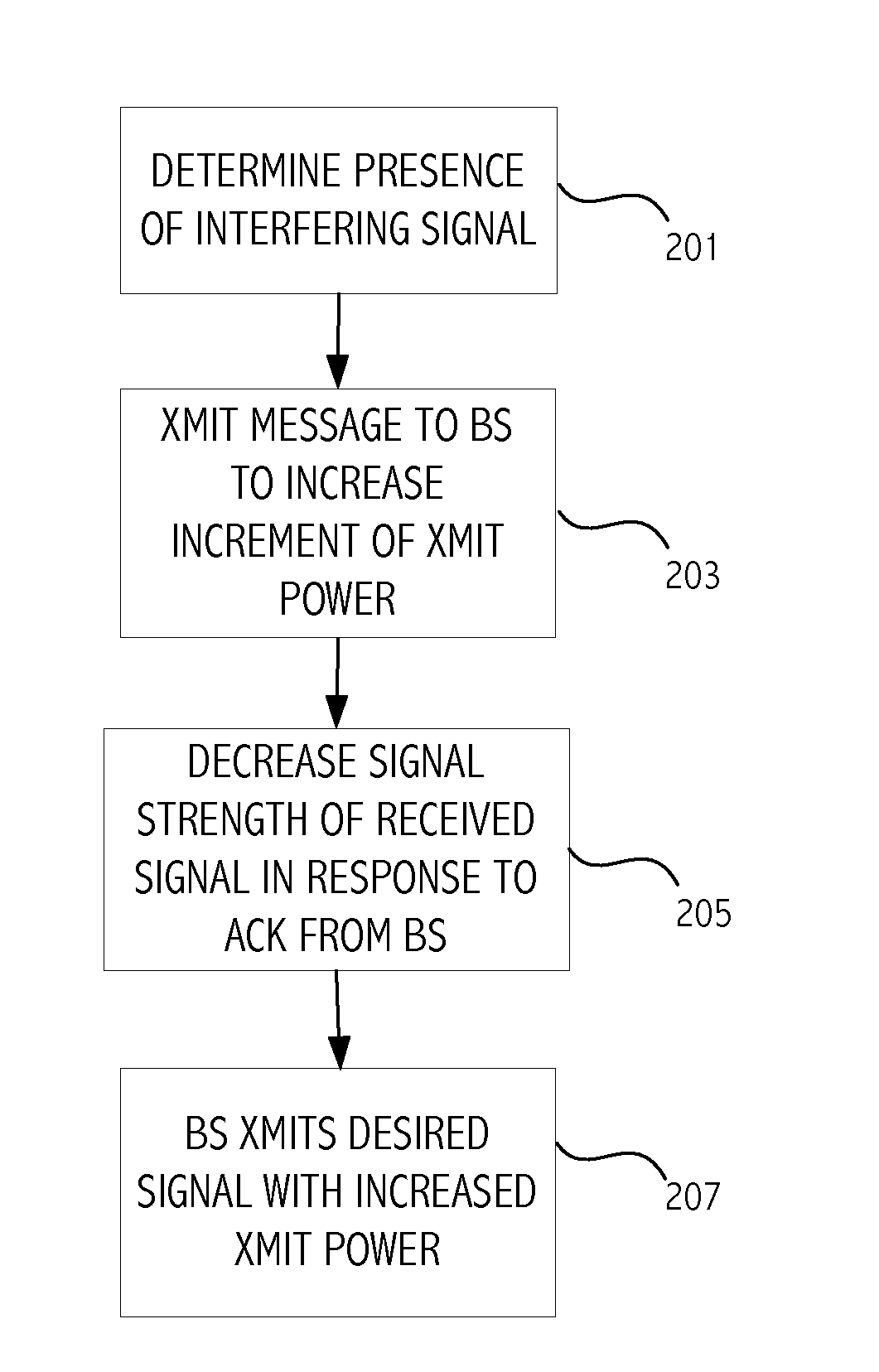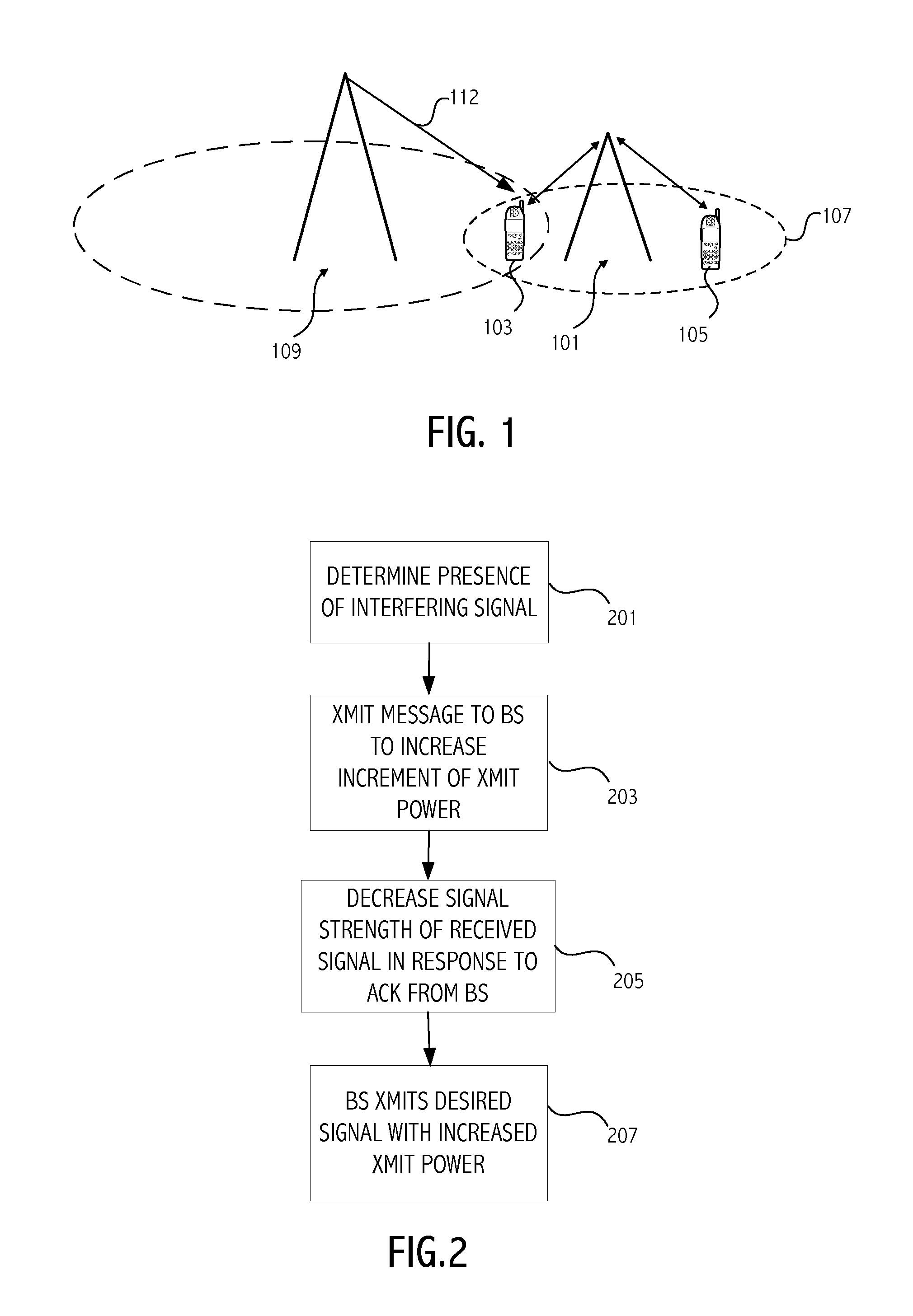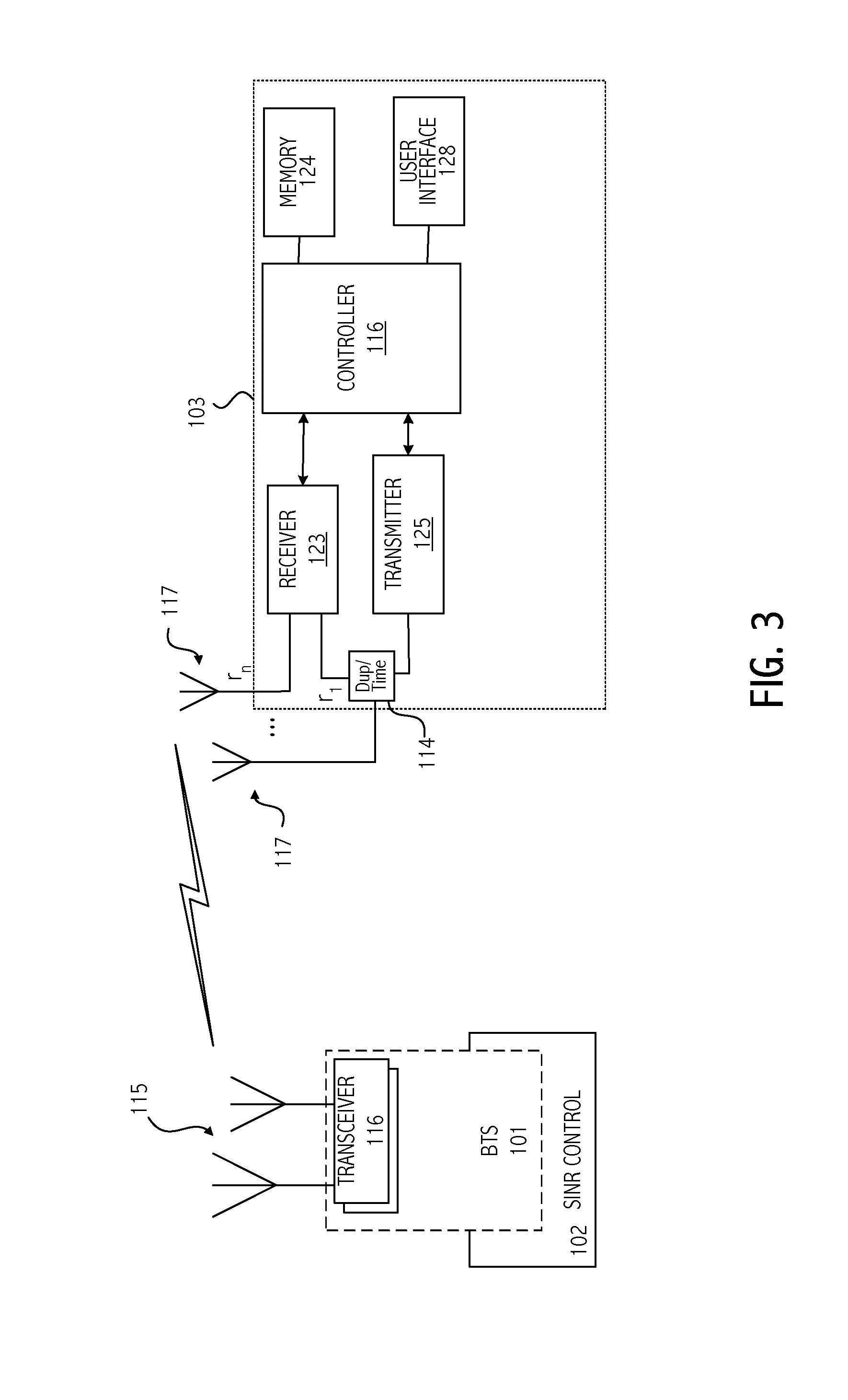Adaptive sinr control
a sinr control and adaptive technology, applied in power management, radio transmission, electrical equipment, etc., can solve problems such as intermodulation, dynamic range reduction, and a potential problem that becomes progressively harder to solve, and achieves the effect of increasing the transmission power of the desired signal, improving the signal to interference plus noise ratio (sinr), and increasing the desired signal
- Summary
- Abstract
- Description
- Claims
- Application Information
AI Technical Summary
Benefits of technology
Problems solved by technology
Method used
Image
Examples
Embodiment Construction
)
[0026]FIG. 1 illustrates an environment in which embodiments of the invention can be advantageously employed to reduce interference between selected devices and a base station. As shown in FIG. 1, a base station 101 is in communication with mobile device 103 and mobile device 105 in cell area 107. A high powered transmitter 109 transmits an undesired interference signal 112 that impacts communication between mobile device 103 and base station 101. Thus, the mobile device 103 receives both a desired signal transmitted by the base station 101 and an undesired or interfering signal transmitted by the interfering transmitter 109. According to an embodiment of the invention, an adaptive power control process is implemented in response to detection or knowledge of the presence of the undesired interfering signal to improve the SINR for communications between base station 101 and mobile device 103. Note that communications between base station 101 and mobile device 105 are not impacted by...
PUM
 Login to View More
Login to View More Abstract
Description
Claims
Application Information
 Login to View More
Login to View More - R&D
- Intellectual Property
- Life Sciences
- Materials
- Tech Scout
- Unparalleled Data Quality
- Higher Quality Content
- 60% Fewer Hallucinations
Browse by: Latest US Patents, China's latest patents, Technical Efficacy Thesaurus, Application Domain, Technology Topic, Popular Technical Reports.
© 2025 PatSnap. All rights reserved.Legal|Privacy policy|Modern Slavery Act Transparency Statement|Sitemap|About US| Contact US: help@patsnap.com



